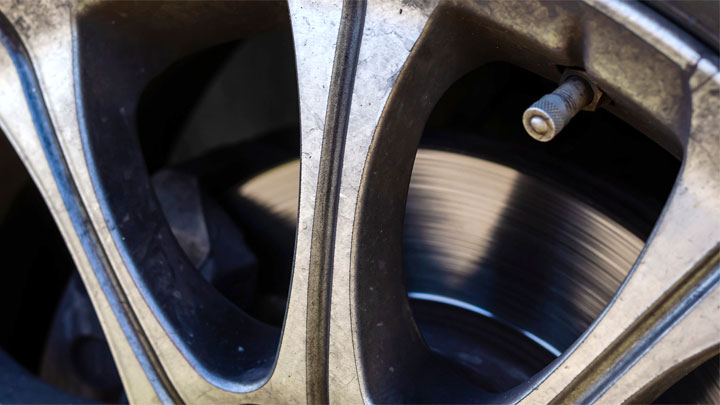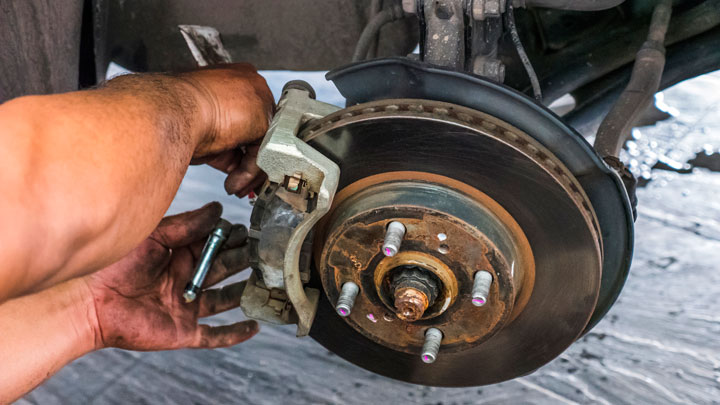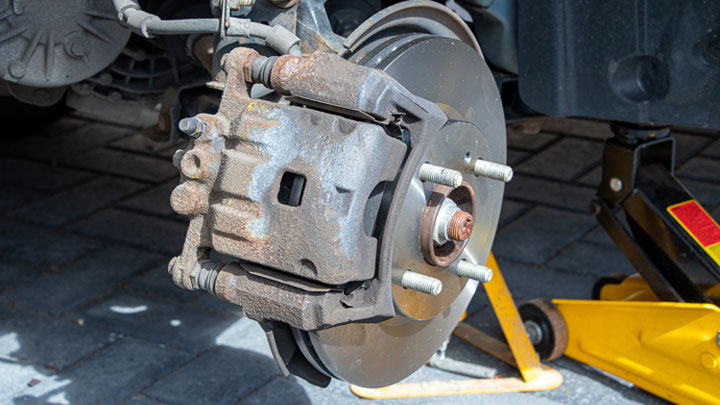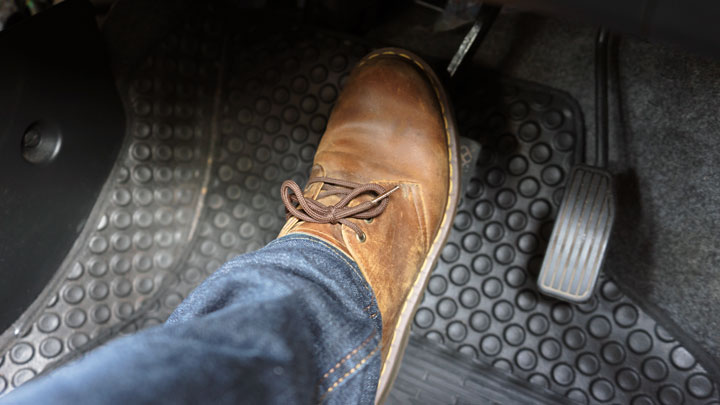Brake Shudder: Why Does My Car Vibrate When Braking?
Feeling your brake pedal pulse and vibrate when you slow down? Don’t panic, but don’t ignore it either. The unnerving sensation known as brake shudder likely stems from various causes needing repairs, but not imminent brake failure.
Still, identifying the root cause is key to restoring smooth, safe braking. Continue reading to learn what causes brake shudder, how to fix it, and whether your driving habits are allowing brake shudder to develop.

What is Brake Shudder?
Brake shudder is perhaps best described as a shaking sensation that is felt through a vehicle’s steering wheel and front-end suspension, whenever the brake pedal is depressed. In many cases, it feels like this shaking occurs at different frequencies, when braking at slow speeds, as opposed to high speeds.
The manner in which brake shudder is felt is largely dependent upon the root cause of the condition itself. This stems from the fact that not all brake shudders are caused by the same underlying issue. While many would be inclined to believe that all brake shudder is directly related to the condition of a vehicle’s foundation brakes, this is not always the case.
Understanding the principle above also assists when attempting to fix brake shudder as a whole. Since not all cases of brake shudder are one and the same, there is no “one size fits all” approach to addressing this issue. A thorough diagnosis of the condition at hand is the only true way to avoid needlessly replacing otherwise fully serviceable components
Common Causes of Brake Shudder
Brake shudder can be caused by a number of underlying issues, some of which are far more difficult to isolate than others. Those who are familiar with the various causes of brake shudder are often able to expedite its repair.
The following are several of the most common reasons you’re experiencing brake shudder.
#1 – Warped Brake Rotors and/or Worn Brake Pads

More often than not, brake shudder can be traced back to a combination of worn brake pads and warped brake rotors.
When a vehicle’s rotors and pads become distorted, an otherwise smooth friction surface becomes compromised. These irregularities are then felt as a persistent vibration or shudder when the affected vehicle’s brakes are applied.
#2 – Tire Imbalance
To minimize vibration and sustain optimal performance, a vehicle’s wheels/tires must be balanced at specified intervals.
When wheels/tires are out of balance, a noticeable vibration can typically be felt at a defined speed. This can be felt in much the same way as a person would perceive a brake shudder, as vehicle speeds drop to a certain threshold during braking.
#3 – Sticking Brake Calipers

A vehicle’s brake calipers age and deteriorate in condition with the passage of time, often leading to a condition known as “sticking”. When a brake caliper sticks, it becomes incapable of releasing in response to the release of a vehicle’s brake pedal.
A sticking brake caliper leads to uneven distribution of braking forces, often leading to a noticeable shudder.
#4 – Poor Alignment
In a number of instances, brake shudder can be caused by irregular tire wear that comes as the result of poor alignment. When a vehicle’s front end is out of alignment, feathered or chopped tread often results.
The vibration that results from this irregular wear is typically felt with more intensity at a defined speed. This vibration manifests in the form of brake shudder when a brake application reduces vehicle speeds to within this specified range.
How to Fix Brake Shudder

Fixing brake shudder comes down to a matter of diagnosing the underlying condition causing the persistent vibration, as a whole. Under the bulk of circumstances, remedying the situation at hand will involve replacing a vehicle’s brake pads and rotors. This is especially true when a brake shudder occurs at any speed.
If after new pads and rotors, brake shudder persists, attention will shift toward addressing tire/wheel imbalance, worn steering/suspension components, and/or misalignment. At this point, a thorough inspection of all front-end components will be required.
This should be followed up by having the affected vehicle’s front end aligned, and all four wheels balanced. Upon the completion of these items, a thorough test drive should confirm the elimination of the previously persistent shudder.
Is Brake Shudder Dangerous to Drive With?
By itself, brake shudder is not overly dangerous. However, this condition is only likely to worsen with time, possibly hampering braking efficiency as a whole.
Therefore, you should waste no time addressing the issue at hand, especially if you cannot be sure of the exact cause of the brake shudder that you’re experiencing.
In any event, the root cause of your vehicle’s brake shudder should be thoroughly diagnosed and repaired as soon as possible. Doing so will prevent undue risk, and mitigate the chance of further foundation brake deterioration.
If DIY repairs are not your forte, have a trusted mechanic or service center address the issue as soon as possible.
Can an Alignment Help?
Getting an alignment can indeed help brake shudder as a whole, assuming, of course, that your vehicle’s brake shudder is caused primarily by poor alignment.
This is the case when irregular tire wear caused by poor alignment, leads to a noticeable shuddering when a vehicle hits a certain speed. In such instances, an alignment followed by a tire rotation is likely to eliminate the underlying shudder.
Can Poor Driving Habits Cause Brake Shudder?

Though not always the case, poor driving habits can in fact cause brake shudder to develop in certain cases, and worsen in others.
This is especially true in instances where drivers frequently panic stop, or lean heavily upon the use of their brakes, time and time again. This heavy brake use can easily overheat key brake components, leading to the warpage of rotors.
This, in turn, begins a vicious cycle of sorts, wherein continued braking in an overly aggressive manner only further compromises a vehicle’s already warped rotors. As a result, brake shudder quickly worsens to a degree that is far more noticeable than it would be otherwise.
- 5 Symptoms of an EVAP Leak (and Repair Cost) - Apr 27, 2024
- P0480 Code (Symptoms, Causes, and How to Fix) - Apr 19, 2024
- Car Temperature Gauge Stopped Working? (Here’s Why) - Apr 15, 2024
